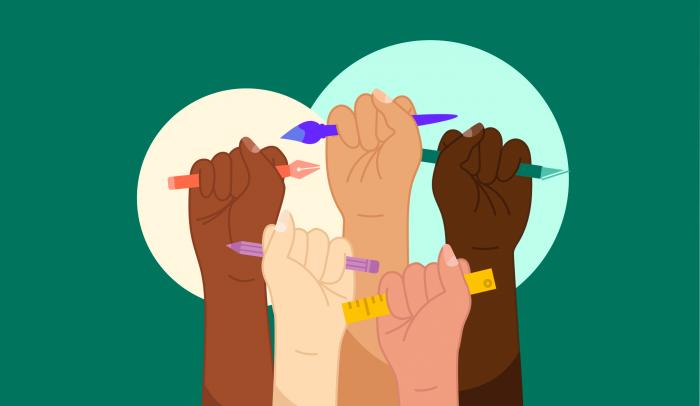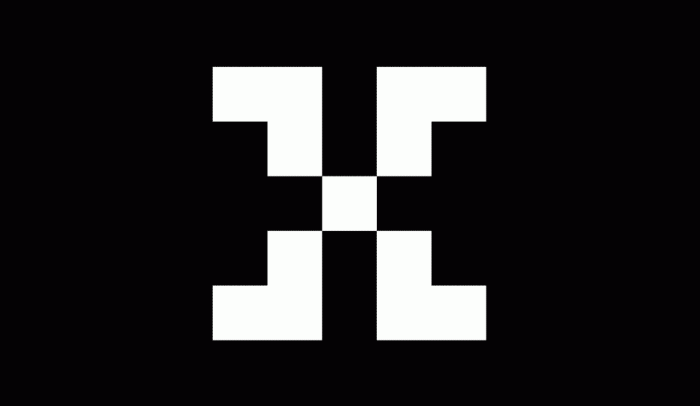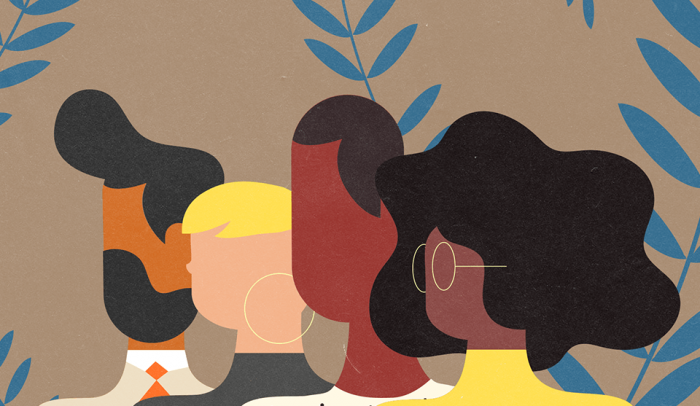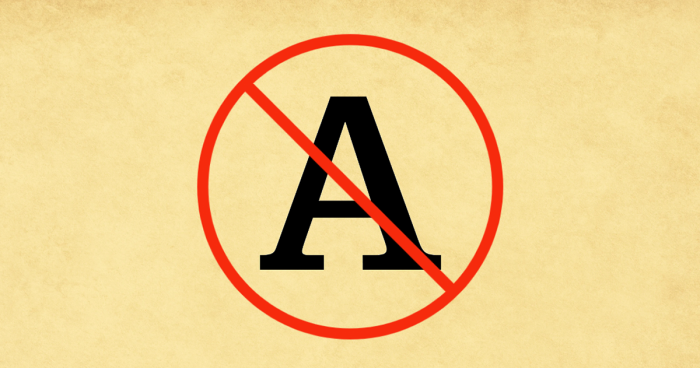In solidarity with the Black Lives Matter movement, designers are calling for the design industry to change—to make it more inclusive for designers of color by addressing the pervasive systemic racism in design schools, agencies, and organizations. Many of these designers organize and act for change in the best way they know how—through design. Jennifer Rittner for Eye on Design referred to this specific trend of anti-racist protest graphic as a “movement guide,” sharing valuable bite-sized information in sharable carousels. They cover everything from tactics for virtual protesting, to the basics of allyship, to mutual aid and reparations.
Others have taken the energy of the moment to invest in new initiatives to help amplify Black voices, supporting change in the industry and beyond. Here is a shortlist of BIPOC-led initiatives formed in solidarity with the Black Lives Matter movement, and how these initiatives use design to keep the movement going.
Design as Protest
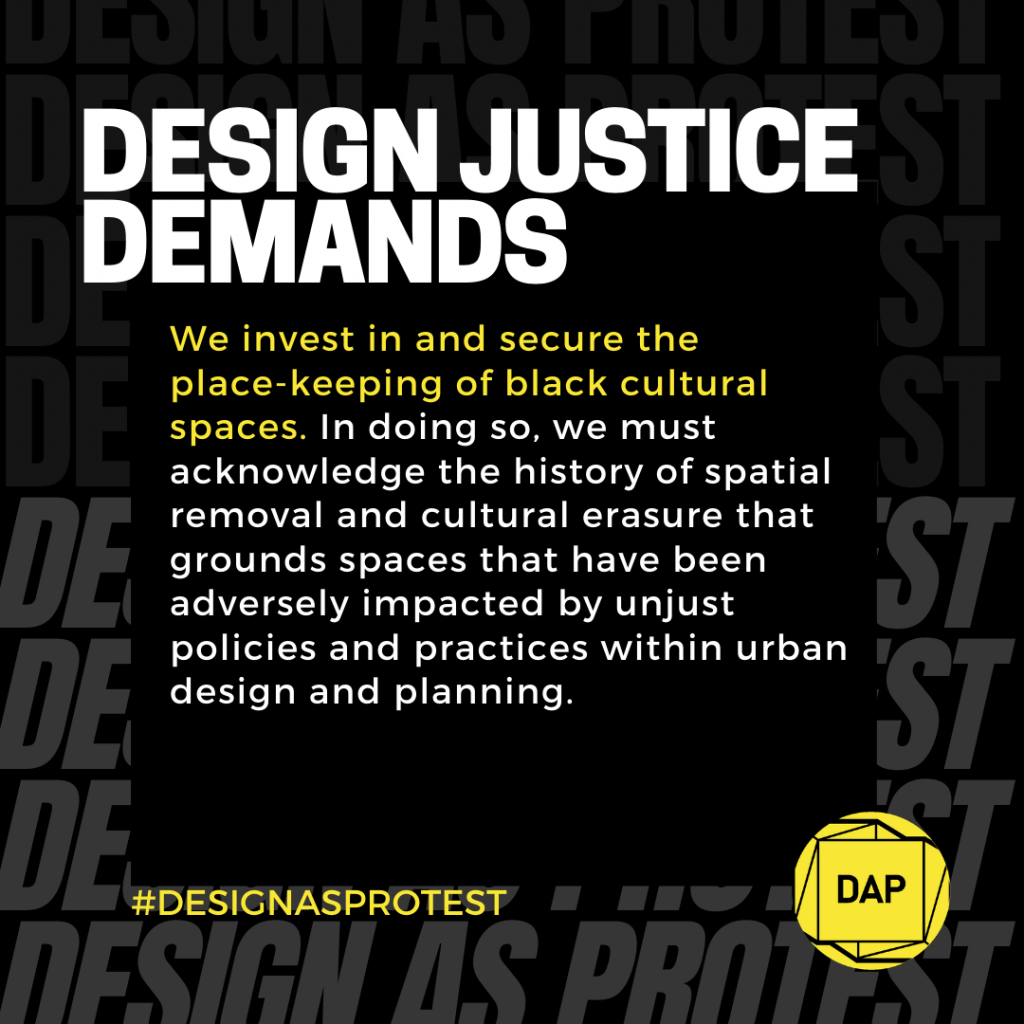
Design as Protest (DAP) is a collaborative organization led by Black interdisciplinary designers Bryan Lee Jr., De Nichols, Michael Ford, and Taylor Holloway, as well as V. Mitch McEwen and Sunni Patterson. In solidarity with the Black Lives Matter movement, DAP called upon the design industry to adhere to nine Design Justice Demands—including reallocating funds supporting police departments, putting an end to crime prevention through environmental design tactics (CPTED), and ceasing to design prisons, jails, and other structures of incarceration. Designers can commit to the demands for Design Justice for Black Lives here; they can also check out the upcoming events and workshops hosted by DAP on its Instagram.
Where Are the Black Designers
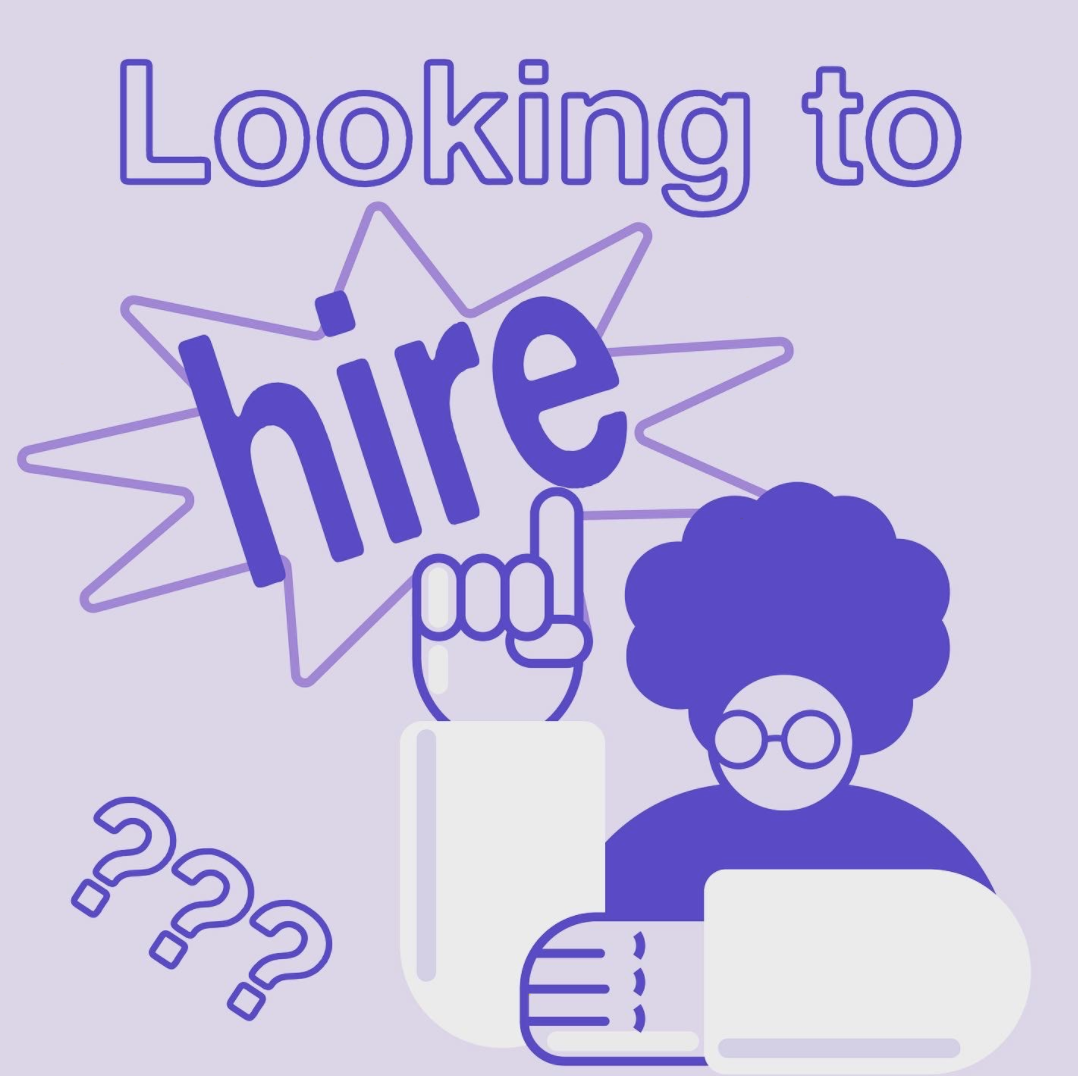
Taking its name from Maurice Cherry’s talk at the 2015 South by Southwest Interactive, this new initiative founded by interaction designer Mitzi Okou is on a mission to keep the conversation about the underrepresentation of Black designers going. The group held a conference in June, with panelists including Naj Austin, the CEO of Somewhere Good, Shabnam Kashani, an interaction designer at Google working on inclusive design, and Raja Scharr, the Program Director of Drexel University Product Design. The panelists talked about ways to address the systemic issues plaguing the industry, and the group has since kept the conversation going—most notably in its Slack channel. The group shares articles, jobs, and resources—from these free stock images featuring people of color to this free, online portfolio school for Black creatives—to help empower designers to change their own industry.
Collective Power
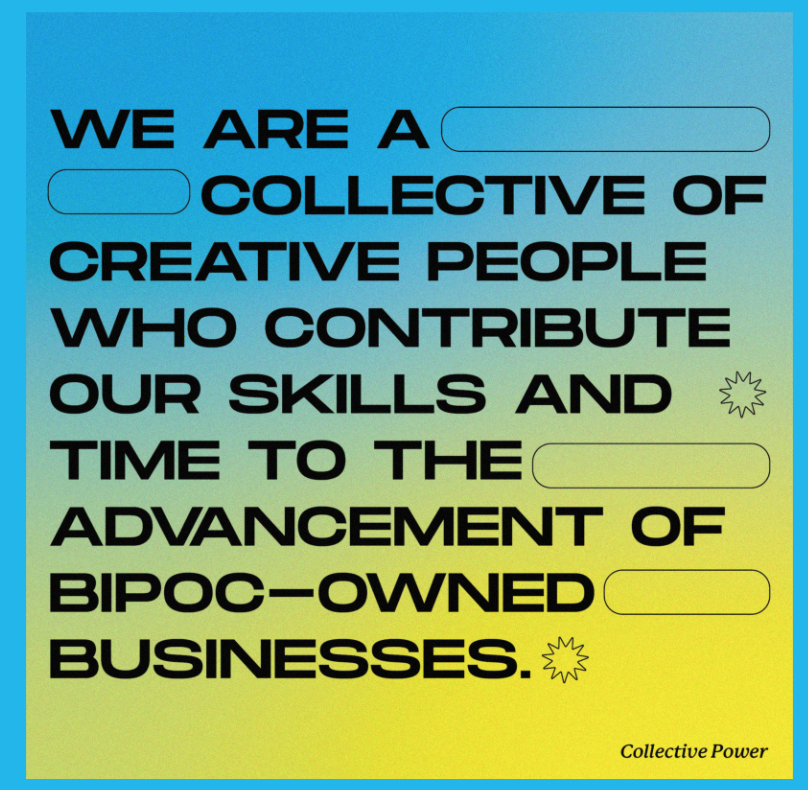
In the spirit of empowering marginalized voices, a “casual collective” of volunteer designers started a spreadsheet in early June with the mission of offering their services to BIPOC-owned businesses. Now the group has 124 members all over the country, offering everything from graphic design to communications to web development. They’ve had so much interest from clients that they’re currently at capacity. The group is open to new members.
Creative Reaction Lab
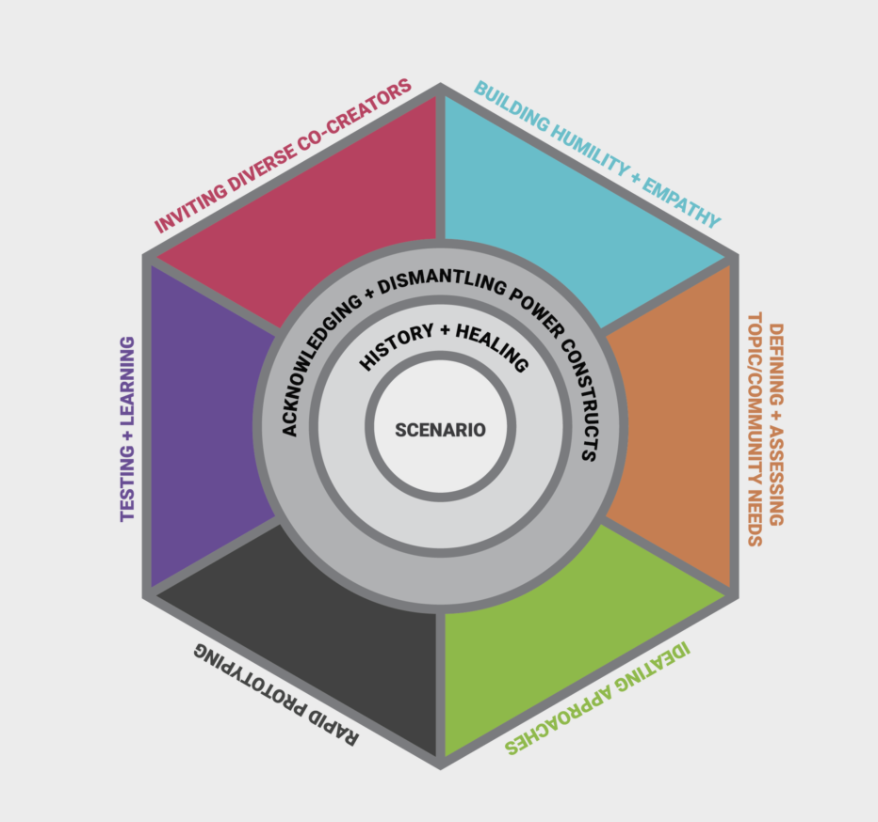
Creative Reaction Lab was founded by designer Antionette Carroll in response to the 2014 Ferguson uprisings. Based in St. Louis, its mission is to empower and support Black and Latinx youth to be leaders of healthy and racially equitable communities—what they call “Redesigners for Justice”—by leveraging design thinking. The method Carroll has developed, in collaboration with the communities she works with, is called Equity-Centered Community Design, which focuses on “the intersection of community development, design-based problem solving, and equitable outcomes.” The Creative Reaction Lab published a Field Guide—which includes hypothetical scenarios, definitions of key terms, and tactics—for those interested in designing for equity in their own environments.
Design to Divest
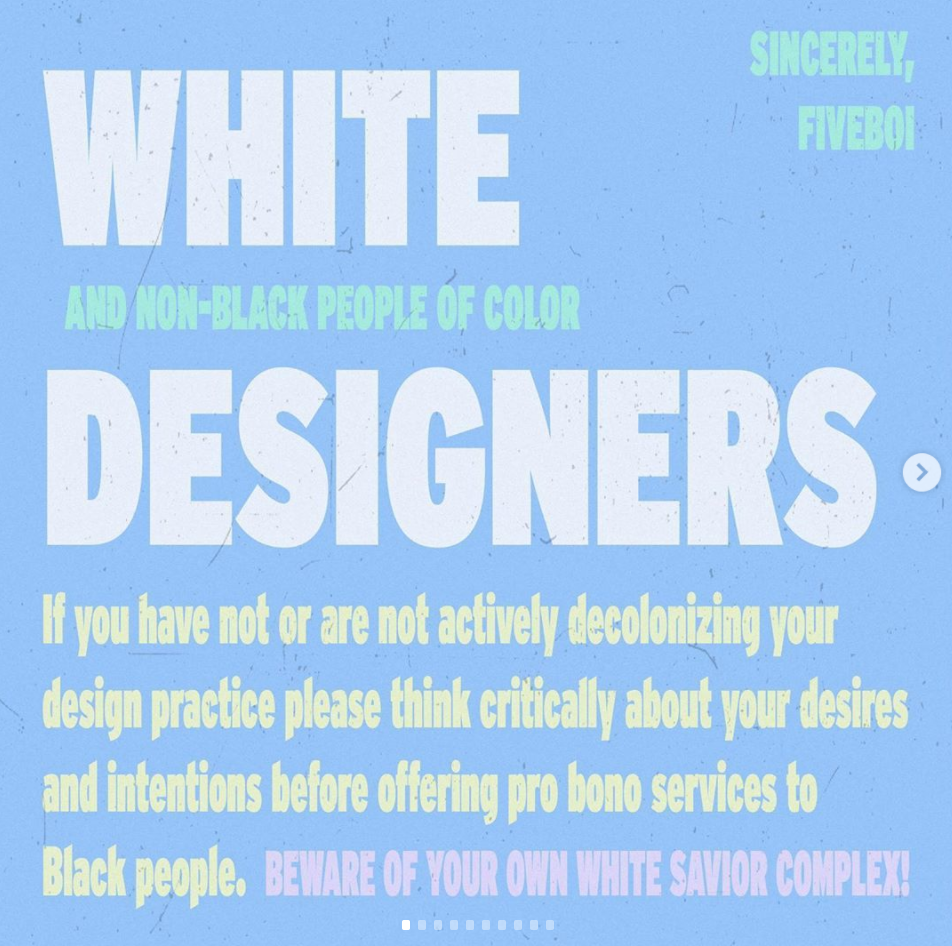
Founded by Vanessa Newman, the head of brand experience at Ethel’s Club (a digital lifestyle community for people of color), this community was originally Rise to Design, a virtual meetup for designers to connect during the early months of the coronavirus pandemic. But during the June uprisings, Newman and their fellow founding members decided to expand the collective to create a task force of BIPOC designers who could design free materials for Black organizers. The response was immediate and overwhelming, with over 500 designers signing up—the majority of them white and non-Black POCs—and changed the scope of the collective. “The design industry almost replicated itself before my very eyes,” Newman told Eye on Design.
Because of that, Newman had to explain to the new members that offering free services to Black-led organizations was problematic if they hadn’t already engaged in anti-racist efforts. “You wouldn’t try to creative direct a multi-million dollar Nike campaign if you just enrolled in design school a week ago. So don’t design for Black people if you weren’t down with the revolution a week ago.”
Now, the collective is on a mission to dismantle the design industry’s systemic racism. “Hopefully the people in our group not only want to design flyers, but want to design new systems that support not just Black lives that are being murdered, but Black lives that are in their vendors’ offices and are applying for the same jobs as them.”
Black Wellness Guide
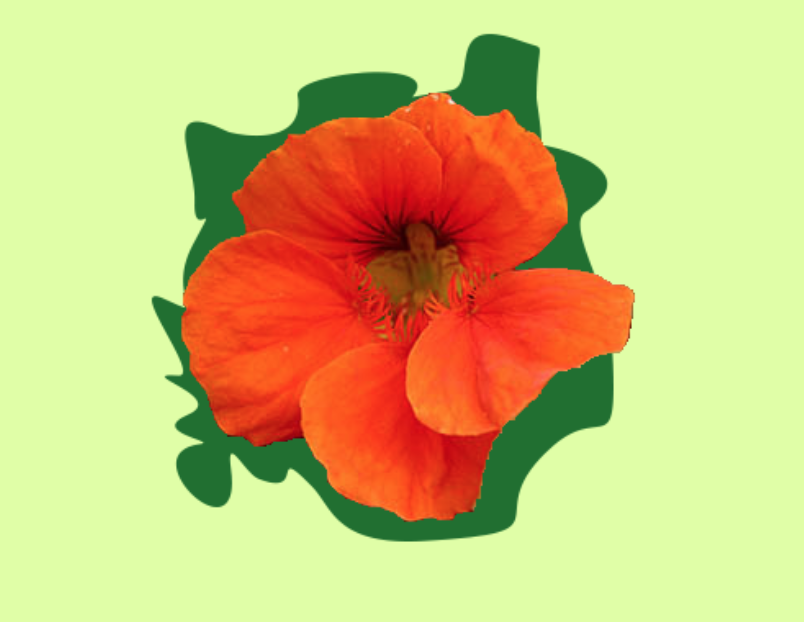
Compiled by Brazilian artist Chantal Feistosa, this colorful, emoji-peppered Google Doc of resources relates to the health, and wellness of Black people. It covers everything from breathing exercises to sustainable food sources to tools for finding a therapist. This is not Feitosa’s first social justice project. When she was a student at RISD, she was a collaborator on “The Room of Silence,” Eloise Sherrid’s documentary about the difficulties that students of color face at art school. The Wellness Guide also has a crowdsourcing function, for those who have recommendations for other resources that don’t appear on the list.
